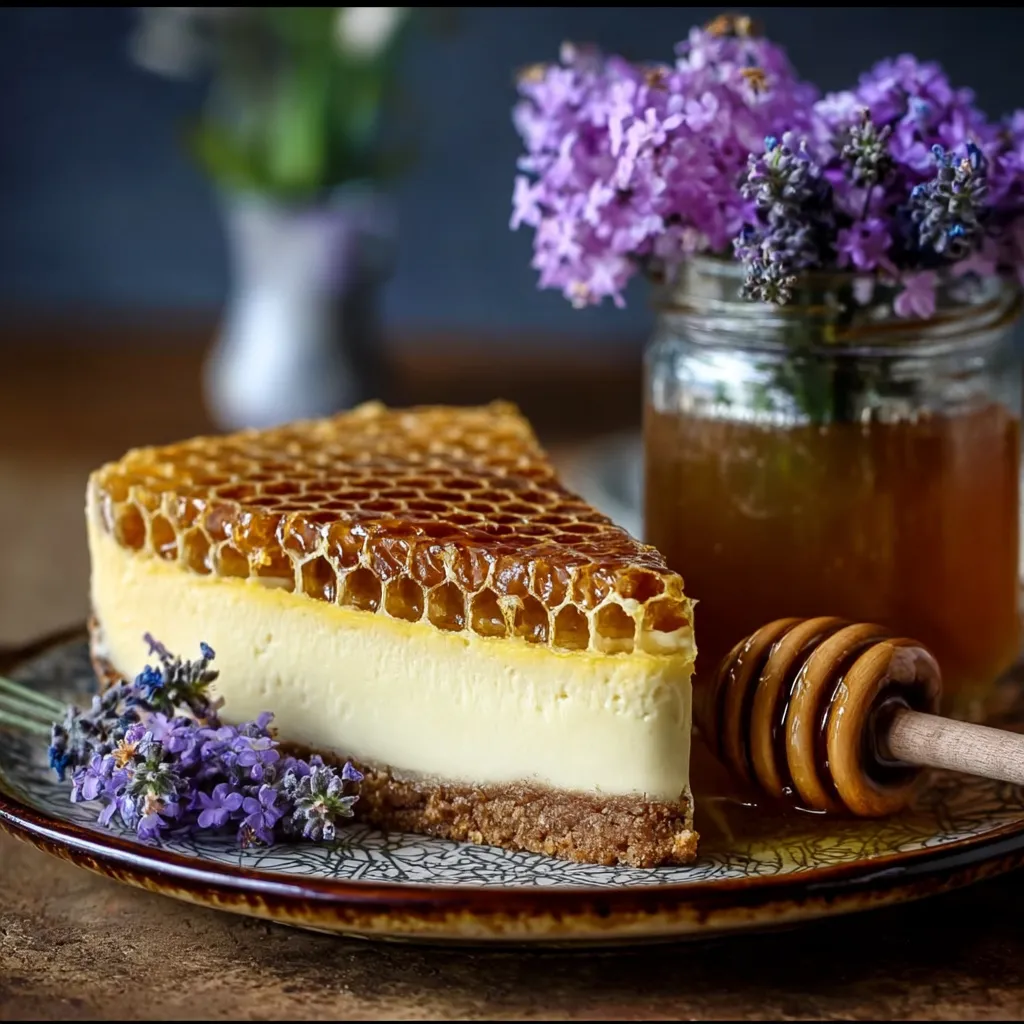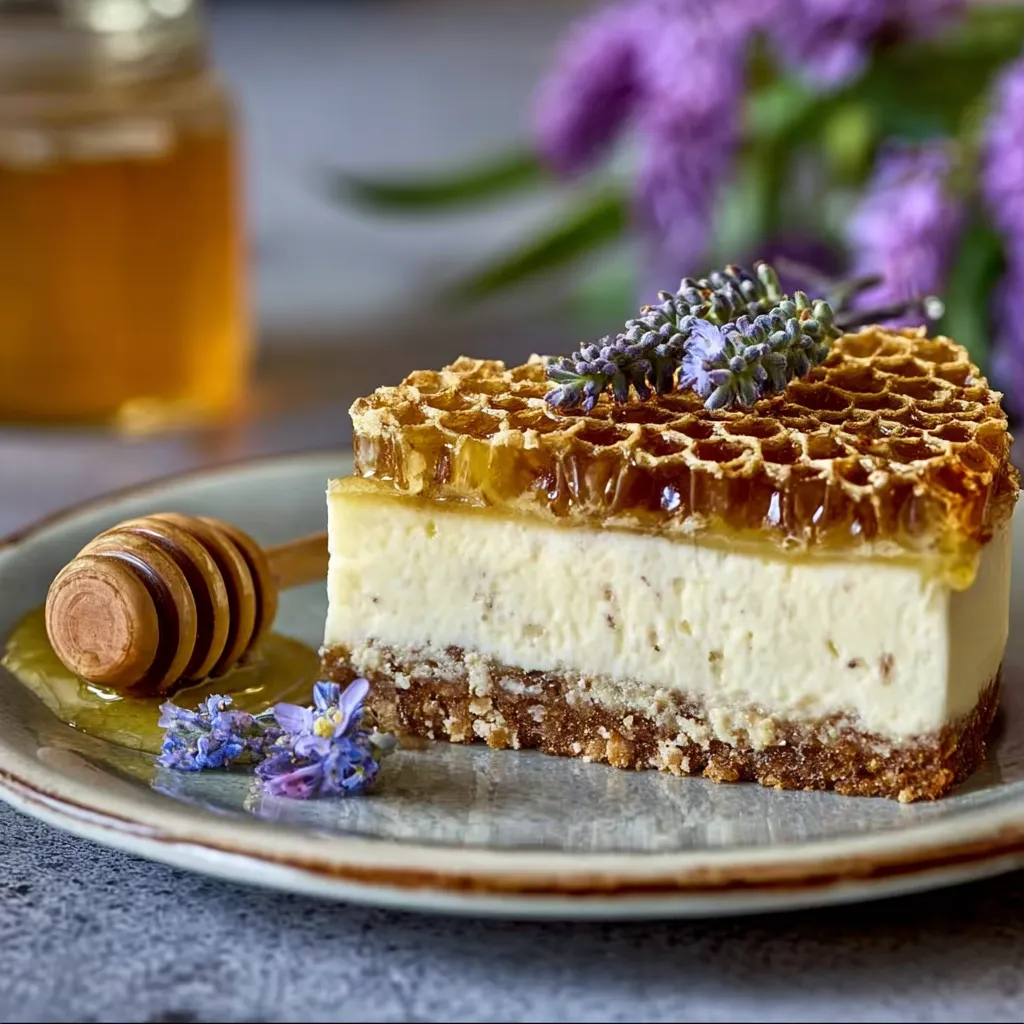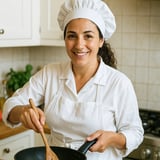 Save
Save
This lemon lavender cheesecake balances bright citrus notes with delicate floral undertones, creating an elegant dessert that's both familiar and unique. The crowning touch of honeycomb adds a stunning visual element and sweet crunch that takes this cheesecake to artisanal heights.
I first created this recipe for my sister's garden party and it was such a hit that guests were asking for the recipe before they even finished their slices. The honeycomb garnish always draws gasps when I bring it to the table.
Ingredients
- Graham cracker crumbs: Create a classic cheesecake foundation with the perfect sweet crumbly texture. Try shortbread cookies for an extra buttery flavor profile.
- Cream cheese: Forms the luscious base. Always use full fat for the creamiest results and ensure it's properly softened.
- Fresh lemon juice and zest: Provide bright acidity that balances the richness. Meyer lemons work beautifully when in season.
- Culinary lavender: Adds the signature floral notes. Look specifically for food grade lavender to avoid any bitter taste.
- Fresh honeycomb: Creates a stunning visual presentation and adds textural contrast. Source from local beekeepers for the freshest flavor.
- Sour cream: Contributes silky texture and subtle tang that enhances the cream cheese. Room temperature is essential for proper incorporation.
Step-by-Step Instructions
- Prepare the Crust:
- Combine graham cracker crumbs with sugar and salt before drizzling in melted butter. The mixture should hold together when pressed between your fingers without being overly greasy. Press firmly into the springform pan using the bottom of a measuring cup for an even layer. The prebaking step ensures a crisp foundation that stands up to the creamy filling.
- Create the Lavender Infusion:
- Warm the lemon juice slightly before adding the culinary lavender to release the essential oils. Allow to steep for exactly 10 minutes as longer infusion times can make the flavor too perfumey. Strain through a fine mesh sieve pressing gently on the buds to extract all the flavor. This controlled infusion provides subtle floral notes without overwhelming the palate.
- Perfect the Filling:
- Beat cream cheese on medium low speed until completely smooth with no lumps whatsoever. Add sugar and continue beating until just incorporated then add eggs one at a time allowing each to fully integrate before adding the next. Gently fold in sour cream lemon juice with lavender and vanilla using a rubber spatula with a light touch. Overmixing introduces air which can cause cracks during baking.
- Master the Water Bath:
- Wrap the springform pan thoroughly in heavy duty aluminum foil coming up the sides to prevent water seepage. Place in a larger roasting pan and pour in hot water halfway up the sides of the springform. This gentle cooking environment prevents cracks by maintaining even heat distribution throughout the baking process. The slow cooling in the turned off oven is crucial for proper setting.
 Save
Save
The first time I served this cheesecake was at my best friend's bridal shower. I was so nervous about the lavender being too strong but watching her face light up with that first bite made all the recipe testing worthwhile. The honeycomb garnish was inspired by a dessert I enjoyed during a trip to southern France where lavender fields stretched as far as the eye could see.
Storing Your Cheesecake
Store this cheesecake covered in the refrigerator for up to 5 days. For best results add the honeycomb garnish just before serving as it can become sticky when refrigerated. If freezing wrap individual slices tightly in plastic wrap followed by aluminum foil. Thaw overnight in the refrigerator for best texture results. The flavor actually develops beautifully after a day of chilling making this the perfect dessert to prepare in advance.
Lavender Tips for Success
Culinary lavender differs significantly from decorative or craft varieties which may contain pesticides or other treatments unsafe for consumption. Look specifically for food grade lavender at specialty stores or online. Fresh lavender is more potent than dried so reduce the amount by half if using fresh from your garden. For those sensitive to strong floral flavors create a separate lavender honey drizzle that guests can add according to their preference rather than incorporating it directly into the filling.
Serving Suggestions
Present this showstopper on a cake stand with fresh berries scattered around the base. A light dusting of powdered sugar over the honeycomb creates a magical effect especially for special occasions. Serve slightly chilled but not cold from the refrigerator to allow the flavors to fully bloom. Pair with a dessert wine like Sauternes or Moscato dAsti for an elegant dinner party finale. For brunch gatherings offer alongside espresso or Earl Grey tea which complements the citrus and floral notes beautifully.
Troubleshooting Common Issues
Cracks in your cheesecake usually indicate either overmixing or improper temperature management. The water bath is essential not optional for achieving that perfectly smooth top. If cracks do appear simply cover with honeycomb pieces or a thin layer of sweetened sour cream. If your lavender flavor is too subtle try grinding the buds before infusing to release more essential oils. Conversely if the flavor is too strong balance with additional lemon zest or a drop of pure vanilla extract to round out the profile.
Recipe FAQs
- → Can I use dried culinary lavender instead of fresh?
Yes, dried culinary lavender is actually preferred for this cheesecake. Make sure you're using culinary-grade lavender specifically (not decorative or potpourri lavender which may contain chemicals). You can adjust the amount based on your preference for floral flavor - start with 1 teaspoon if you're uncertain.
- → What can I substitute for honeycomb?
If you can't find fresh honeycomb, you can substitute with a honey drizzle and add texture with candied lemon peel, crushed honeycomb candy (like Violet Crumble or Crunchie bars), or even a sprinkle of candied nuts. The goal is to add both sweetness and textural contrast to the creamy cheesecake.
- → How do I prevent my cheesecake from cracking?
The water bath method in this recipe is key to preventing cracks. Make sure to wrap your springform pan well with foil to prevent water seepage, don't overmix the batter after adding eggs, bake at the recommended lower temperature, and follow the cooling instructions carefully (letting it cool gradually in the turned-off oven with the door cracked).
- → Can I make this cheesecake in advance?
Absolutely! This cheesecake actually benefits from being made ahead. You can prepare it up to 3 days in advance and keep refrigerated. Just add the honeycomb topping right before serving to maintain its texture and appearance.
- → Is there a dairy-free version of this cheesecake?
You can adapt this to be dairy-free by using plant-based cream cheese and sour cream alternatives. Coconut cream works well as a sour cream substitute, and several brands now make vegan cream cheese that sets properly when baked. Use a plant-based butter in the crust as well.
- → How do I know when my cheesecake is done baking?
The cheesecake is done when the edges are set but the center still has a slight jiggle (about a 2-3 inch circle in the middle should wobble slightly when gently shaken). It will continue to set as it cools. Overbaking can cause cracks and a dry texture, so it's better to slightly underbake than overbake.
